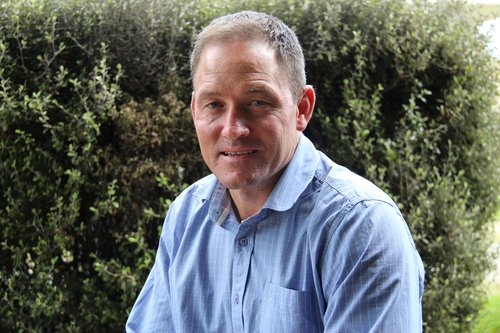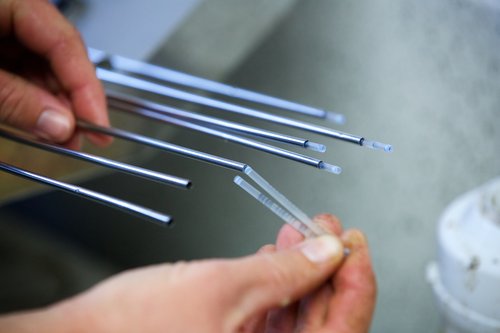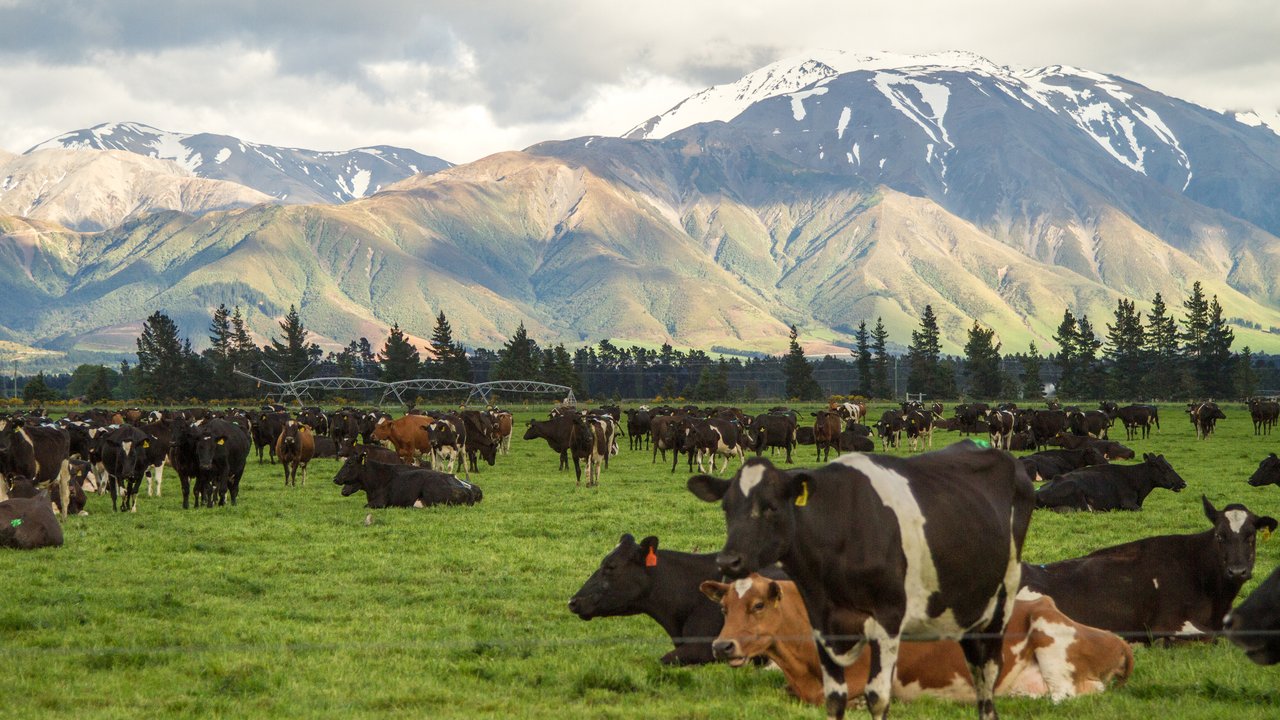From relief milker to university grad

I earned some of my first money as a schoolboy relief milker, and got to see a fair few herds over that time.
When I got the opportunity to relief-milk some of the very best herds in our area (Te Awamutu), I saw the difference in productivity-potential between those, and other herds, was enormous.
I realised really early on there was a significant difference between good and average cows.
As I moved on to university and then on to our own farming business, I became increasingly opposed to the ‘90% feeding-10% breeding’ philosophy, to the point where I realised what an unhelpful fallacy it was to the industry. This kind of mentality was doing a great disservice to farmers who followed it, and it was intergenerational. Nobody ever challenged it.
Finding value in genetic gain
It was clear to me there was significantly more value in genetic merit than attributing just 10% of the story to it. While I acknowledge feeding and nutrition as key components to a farm business, I simply don’t accept that breeding/herd improvement is a minor part of the equation.
I’m not sure, but perhaps people don’t appreciate the benefit of genetic gain because of the time lag between putting quality genetics in to an average herd and seeing the benefits of that. Inevitably it takes time for changes to emerge, or at least a few years before milksolid efficiency levels become obvious, as superior livestock flow in to the herd asset.
So the results of better genetics won’t necessarily be immediate, but over the mid- to long-term they’ll be very tangible.
I think a bigger reason some farmers don’t appreciate the power of genetic gain is that they’ve perhaps been guilty of being partially blind to it.
Genetic gain, I think, was taken for granted as our entire industry rode the growth wave through the 1990s and early 2000s; let me explain that a little more: In the time that I’ve been farming, we’ve seen two or three key cycles. When I left university there were 2.1 million cows in the dairy population. When I came to LIC in 2011 we were knocking on the door of 5 million cows.
Those cows had to come from somewhere. If she looked-like, she smelt-like, she acted-like a cow, she was a cow.
So the industry went through unprecedented growth and we undervalued the good cows. The dairy price fluctuated during that time but it was generally enough to make a profit. We were in such a hurry to grow that it didn’t matter who was producing, what mattered was merely that she was producing.
It all culminated in 2013-2014’s payout of $8.50. It didn’t matter about her efficiency, or her marginal cost, because she’d still earn for you – and the farm business was growing by the day.
Market Correction and the knock-on effect
When the environment changed, and the sustained low payout period hit, farmers were forced to start looking at every component of their business, as did all dairy businesses, including LIC.
So when it came to their cows, farmers started looking closely and discovered ‘that group of cows, is significantly more profitable in my herd than that group of cows’.
Farmers looked at margins, and saw their bottom five percent of cows on production worth (PW) were poor converters of feed to milksolids. Their lack of efficiency and performance was evident compared to the rest of the herd. On the whole, the industry has looked to reshape farm systems over recent years and you can bet the first cows out the gate were the poor performers who were getting a free ride.
 The interesting thing is that when you take all the herd test data that flows in to LIC, and you correct for the age, breed, and location, you’ll find that the difference between the top-quartile and bottom quartile of all herd tested cows is 160kg milksolids per cow, per lactation.
The interesting thing is that when you take all the herd test data that flows in to LIC, and you correct for the age, breed, and location, you’ll find that the difference between the top-quartile and bottom quartile of all herd tested cows is 160kg milksolids per cow, per lactation.
That is crazy: These (bottom quartile) cows are being given the same opportunity, they’re on the same feed pads the same amount of time, but the difference in milksolid output is a staggering 160kg!!
People frequently go home after I present that figure at farmer meetings and discover the number is real within their own business, and it creates a real ‘light on’ moment.
I don’t believe New Zealand is going to see a return to the 2.5% growth in cow numbers year-on-year.
As an industry the land area utilised for dairying is likely to remain in equilibrium, and we’re unlikely to be able to milk many more cows due to environmental restrictions and land-use pressures, so my question is, after 26-odd years farming, where are the gains going to come over the next 26 years?
Where are the opportunities?
My honest take is that it’s not going to come out of North-American style farming systems. We will continue to need to be largely pasture-based. In this era of milk price volatility the cost of production will be more important than ever. Among the lowest hanging gains is to form a renewed appreciation for the value of good cows.
The New Zealand dairy industry isn’t going to make more money through more cows, it’s going to make more money through better cows.
Where to from here?
What I’ve talked about so far is merely context, but farmers need more than that, and some are even seeking a new direction out of what’s been an intense and stressful downturn.
It might be that selected farmers want to go once-a-day, or take a step back to more of a pasture-based diet, or pursue a niche like A2.
But for many others, as far as I see things, it’s pretty simple what the focus should be, and it comes at little disruption or additional cost. When it comes to cows, let’s have more of the good ones!
It’s best summed up with this hypothetical situation: Say at the moment you’ve got a 70-BW herd, and you’re doing four to five weeks AB over every cow in the herd. Based on this, the approach is to calculate ‘how many inseminations do I have to make to get my 20% replacements?’
Don’t get me wrong, it’s a common enough approach.
But the problem is that on any given morning of AB, ‘that (great) cow’ can be in-season, and ‘that (poor) cow’ can be in-season. And if there’s a lot of wastage going on and in your herd there’s not a lot of culling on performance, ‘that (poor) cow’ could be retained and her calf could be reared.
There’s little or no dam selection pressure applied.
For example, I’ve gone to farms and looked at their Summary of Calves Reared, and I’ve seen up to a 460PW difference between the best cow and the worst cow that they’re keeping a calf out of.
Frankly, that’s holding the farm back, and it’s also holding the industry back. Because I think too many poor cows in our national herd are propagating the next generation.
So the solution might be to attack things differently.
 Say, instead of carrying out the current four or five weeks of AB over the entire herd, why not do the standard six weeks AB over your top-70% of cows, and put the bottom-30% to SGL?
Say, instead of carrying out the current four or five weeks of AB over the entire herd, why not do the standard six weeks AB over your top-70% of cows, and put the bottom-30% to SGL?
The total number of required inseminations will still be reached but the deployment of ‘selection pressure’ will be powerful.
Based on my rule-of-thumb, which holds that for every 10% you shift ‘selection pressure’, you increase the BW of the cows you’re mating (rearing replacements) from by 10 units, the average herd BW should go up by about 30 points to 100BW.
The example effectively means that you have a 70-BW herd asset, but you’re now mating only from cows that have a 100-BW average (i.e. the top 70% of the herd), so you finish up with 30 extra BW from the dams. They provide half the genetic gain – so that equals 15 (on the resulting calf). So, straight away, instead of making what the industry does (11BW per herd per year), you’re adding potentially another 15BW – bringing the total up to 26BW points a year.
With the remaining 30% mated to SGL Hereford, next spring you’d be selling a bunch of calves to the hot local dairy beef trade, adding significant income diversification over the difficult spring cashflow period.
My big takeout message to farmers is to do replacement mating with a high-BW mob, rather than across the herd in general.
By doing AB across the whole herd, you’ll continue to have too many poor cows propagating the next generation.
In my view, targeting replacements from the group of higher-BW cows is the single biggest opportunity farmers have to increase their rate of genetic gain – without adding significant cost to the system.
The increase rate of genetic gain coupled with a fresh consideration of the value of good cows presents a real opportunity to sharpen up the herd’s efficiency – and its ability to deliver significant, sustainable productive and financial gains.
Across the industry the potential here is huge – within it may well lie the sector’s next growth opportunity.
*This article first appeared in LIC’s LINK newspaper in January 2017





